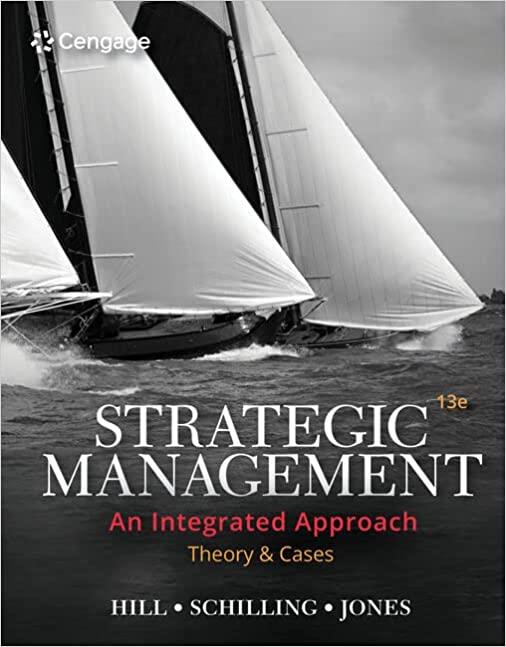Apple has a legendary ability to produce a steady stream of innovative new products and product improvements
Question:
Apple has a legendary ability to produce a steady stream of innovative new products and product improvements that are differentiated by design elegance and ease of use. Product innovation is in many ways the essence of what the company has always done, and what it strives to continue doing. Innovation at Apple began with the Apple II in 1979. The original Macintosh computer, the first personal computer (PC)
to use a graphical user interface, a mouse, and onscreen icons, followed in 1984. After the late founder and former CEO Steve Jobs returned to the company in 1997, the list of notable innovations expanded to include the iPod and iTunes, the Mac Airbook, the iPhone, the Apple App store, and the iPad.
Unlike most companies of its size, Apple has a functional structure. The employees reporting directly to current CEO Tim Cook include the senior vice presidents of operations, Internet software and services, industrial design, software engineering, hardware engineering, and worldwide marketing, along with the CFO and company general council. This group meets every Monday morning to review the strategy of the company, its operations, and ongoing product development efforts.
The industrial design group takes the lead on newproduct development efforts, dictating the look and feel of a new product, and the materials that must be used. The centrality of industrial design is unusual—
in most companies engineers first develop products, with industrial design coming into the picture quite late in the process. The key role played by industrial design at Apple, however, is consistent with the company’s mission of designing beautiful products that change the world. The industrial design group works closely with hardware and software engineering to develop features and functions for each new product, with operations to ensure that manufacturing can be rapidly scaled up following a product launch, and with worldwide marketing to plan the product launch strategy.
Thus, product development at Apple is a crossfunctional effort that requires intense coordination. This coordination is achieved through a centralized command and control structure, with the top-management group driving collaboration and the industrial design group setting key parameters. During his long tenure as CEO, Jobs was well known for clearly articulating who was responsible for what in the product development process, and for holding people accountable if they failed to meet his high standards. His management style could be unforgiving and harsh—there are numerous stories of people being fired on the spot for failing to meet his standards—but it did get the job done.
Even though Jobs passed away in 2011, the focus on accountability persists at Apple. Each task is given a “directly responsible individual,” or DRI in “Applespeak.”
Typically, the DRI’s name will appear on an agenda for a meeting, so everyone knows who is responsible.
Meetings at Apple have an action list, and next to each action item will be a DRI. By such clear control processes, Apple pushes accountability down deep within the ranks.
A key feature of the Apple culture is the secrecy surrounding much of what the company does. Information that reaches the outside world tightly controlled, and so is the flow of information within the company.
Many employees are kept in the dark about newproduct development efforts and frequently do not know what others are working on. Access to buildings where teams are developing new products or features is tightly controlled, with only team members allowed in.
Cameras monitor sensitive workspaces to make sure that this restriction is not violated. Disclosing what the company is doing to an outside source, or an unauthorized inside source, is grounds for termination—as all employees are told when they join the company. The goal is to keep new products under very tight wraps until launch day. Apple wants to control the message surrounding new products. It does not want to give the competition time to respond, or media critics time to bash products under development.
Questions
1. Describe as best you can the organizational architecture at Apple, specifically its organizational structure, control systems, incentives, product development processes, and culture.
2. What do you think is different about the way Apple is organized compared to most high-tech firms?
3. What is Apple trying to achieve with its current organizational architecture? What are the strengths of this architecture? What are the potential weaknesses?
4. Are there changes that you think Apple should make in its organizational architecture? What are these changes? How might they benefit Apple?
Step by Step Answer:

Strategic Management Theory And Cases An Integrated Approach
ISBN: 9780357033845
13th Edition
Authors: Charles W. L. Hill, Melissa A. Schilling, Gareth R. Jones





